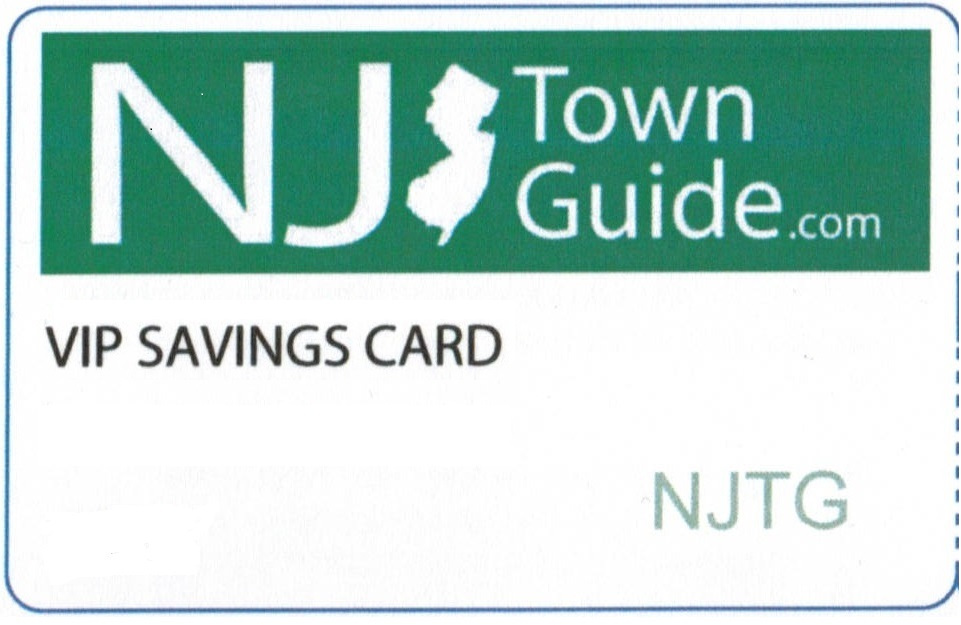Historic Places
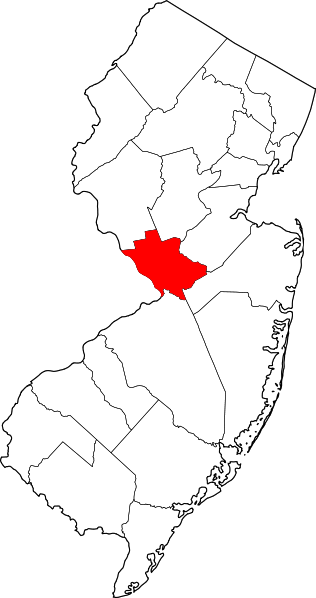
Mercer County is is named for Continental Army General Hugh Mercer, who died at the Battle of Princeton in 1777. Founded February 22, 1838, from portions of surrounding counties, Mercer County has a historical impact that reaches back to the pivotal battles of the American Revolutionary War. On the night of December 25, 1776, General George Washington led American forces across the Delaware River to attack the Hessian barracks in Trenton, New Jersey, who did not anticipate an attack on Christmas. Washington followed the assault with a surprise attack on General Charles Cornwallis' forces in the Battle of Princeton on the eve of January 2, 1777, eventually retaking the colony. The successful attacks built morale among the pro-independence colonists.
British Light Dragoons
East Hanover Street
Trenton, NJ 08608
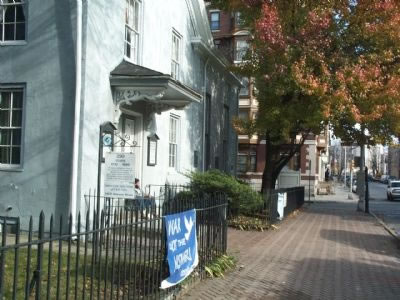
This meeting house was occupied by the British Light Dragoons December 1776.
Church of the Sacred Heart
343 South Broad Street
Trenton, NJ 08608
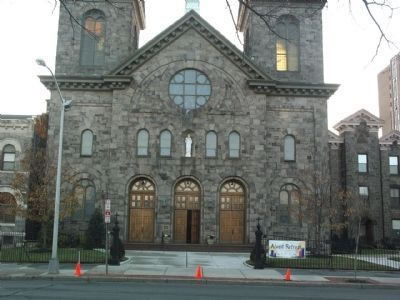
New Jersey’s oldest Catholic parish. Successor of St. John’s 1814.
Alexander Douglass House
East Front Street and South Montgomery Street
Trenton, NJ 08608
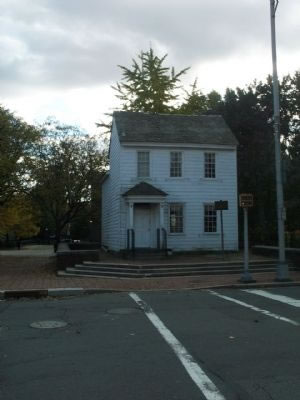
Circa 1766, Home of Alexander Douglass, Quartermaster in Washington’s Army, who fought in the Battle of Assunpink, Jan. 2, 1777. Here on that date General Washington held the Council of War. Washington’s idea was to leave campfires burning on the south bank of the Assunpink allowing his men to move out toward Princeton under the cover of darkness, leaving the enemy on the opposite bank unaware. Many military historians deem this the boldest plot in American military history. The successful battles of Trenton are said to be the turning point of the Revolution. The Douglass House has been moved several times having been built at the site of the Lutheran Church on South Broad Street.
Ellarslie
Cadwalader Park
Trenton, NJ 08618
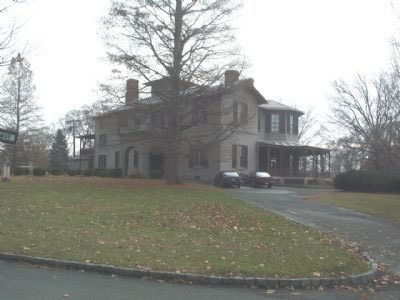
Fine example of Italianate villa designed by John Notman about 1846 for Henry McCall, Paper Manufacturer. In February 1881, Henry McCall Jr. sold Ellarslie to George Farlee for $25,000. Seven years later, in September of 1888, the city of Trenton acquired the property from Farlee for $50,000, which also included the surrounding 80 acres, which would become the city's first public park, Cadwaladar Park, designed by the father of landscape architecture, Frederick Law Olmsted.
Emlen House
312 West State Street
Trenton, NJ 08618
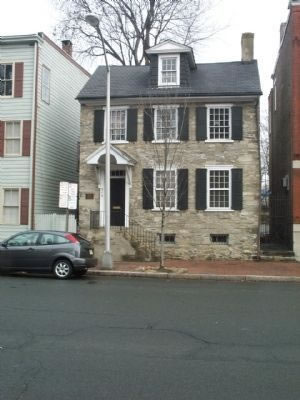
Built 1796 Occupied by the Emlen Family for ninety years. “The Old Stone Tea House” in the nineteen-twenties.
First Presbyterian Church
East State Street
Trenton, NJ 08608
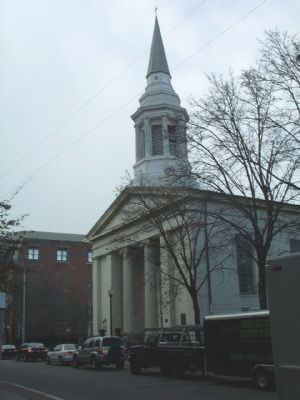
Presbyterian Church formed in 1712. Built in 1726 and rebuilt in 1805.
Friends Meeting House
East Hanover Street
Trenton, NJ 08608
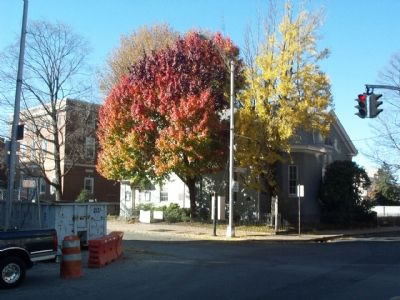
Established 1684 by Mahlon Stacy & others as part of Chesterfield Monthly Meeting.
Building erected in 1739.
Hopewell Academy
West Broad Street
Hopewell, NJ 08525
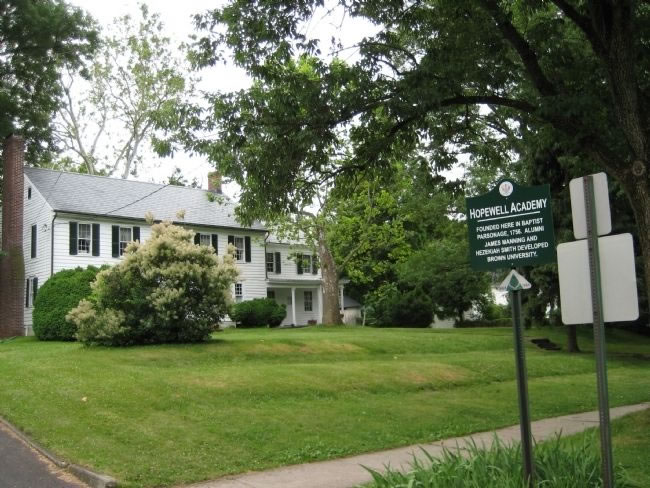
Founded here in Baptist Parsonage, 1756. Alumni James Manning and Hezekiah Smith developed Brown University.
John Moore's Tavern
2695 Lawrenceville Road
Lawrence Township, 08648
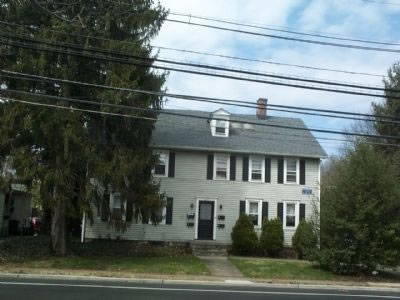
The first reference to this house as a tavern was in May 1789, when William Compton petitioned for a tavern license. He wrote that he had recently purchased a house in Maidenhead opposite the Presbyterian Church and, being encouraged by his neighbors and friends to keep a house of entertainment, solicited a license for the ensuing year. In 1804, John Moore applied for his first license at this location. This tavern was used for many years as a place to hold the annual township meetings. In 1816, a meeting was held here to petition for the township’s name change from Maidenhead to Lawrence. Dr. Gosman, a minister of the Lawrenceville Presbyterian Church, is said to have spoken of visits to the tavern by some of his congregants as “the thirst after righteousness.” In the 1890’s, Ed Conover kept his stage coach in a barn behind the tavern
Joseph Henry House
Princeton University
Princeton, NJ 08542
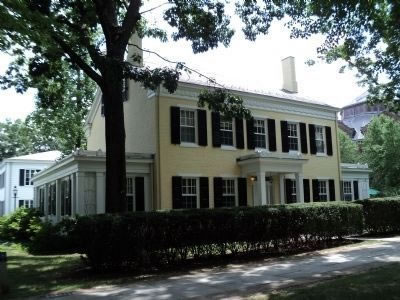
This house is named for Joseph Henry, the first Director of the Smithsonian Institution and a leading American scientist whose scientific contributions were in the field of electromagnetism. He was also a professor at Princeton University from 1832 to 1846.
Joseph Scutter House - First Town Hall of Lawrence
2705 Lawrenceville Road
Lawrence, NJ 08648
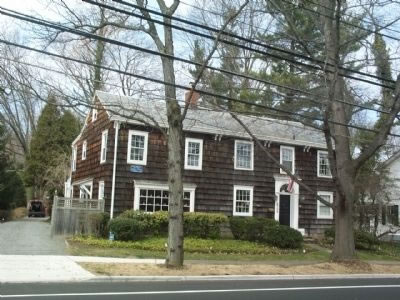
Joseph Scudder House c. 1779. First town hall of Lawrence, NJ from 1931 -1944.
Kelsey Building
West State Street
Trenton, NJ 08608
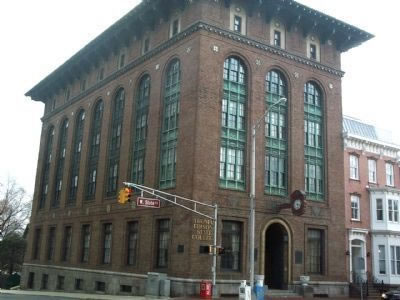
This building was erected in 1910 by Henry Cooper Kelsey as a tribute to the memory of his wife Prudence Townsend Kelsey and for the use of the students of arts and crafts of the City of Trenton.
Lawrence House
2711 Lawrenceville Road
Lawrence, NJ 08648
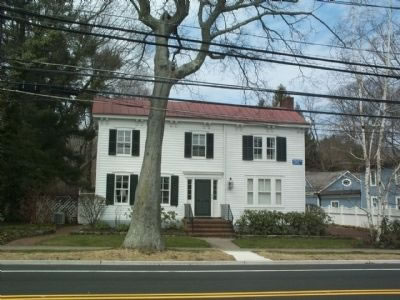
Home of the wheelwright and site of the wheelwright shop. Harvey Brearley’s store 1837.
Maidenhead Church
2688 Lawrenceville Road
Lawrence, NJ 08648
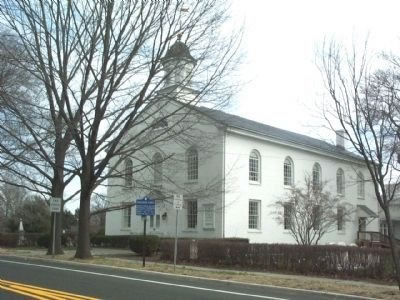
Organized during 1698, this Presbyterian congregation was among the earliest in America. Part of this church was built in 1764.
Mercer County Courthouse
209 Broad Street
Trenton, NJ 08608
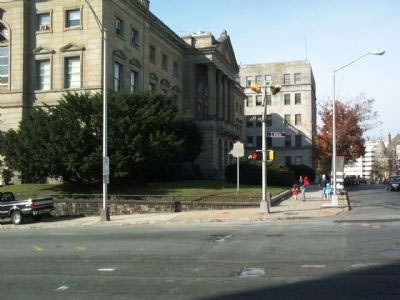
Built on Mill Hill. 1839. Named for General Hugh Mercer who fought at Trenton and died in the Battle of Princeton, 1777. Goodyear vs. Day patent case tried here in 1852. Daniel Webster won for Goodyear. The result was a great impetus to local rubber industry.
Mill Street Playhouse
South Montgomery Street
Trenton, NJ 08611
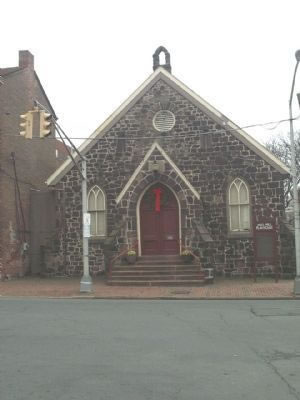
The Mill Hill Playhouse is housed in an old church built in 1873 by the Messiah Church. The building was sold by them in 1902 to the Lutheran Church of the Saviour which merged with other congregations in 1967. The empty church was gutted by fire in 1977 and converted to a theatre by the City of Trenton. The Passage Theatre Company currently uses this facility.
Mount Zion A.M.E. Church
135 Perry Street
Trenton, NJ 08618
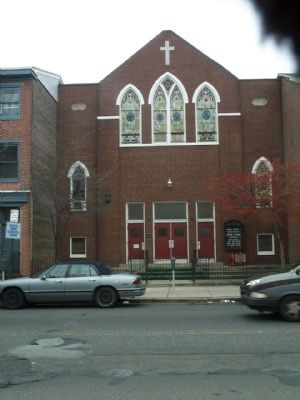
The Oldest Black Church in Trenton Incorporated by slaves and freedmen 1811.
Original edifice this site 1819. Member Founding Conference African Methodism.
Naussau Hall
Princeton University
Princeton, NJ 08542
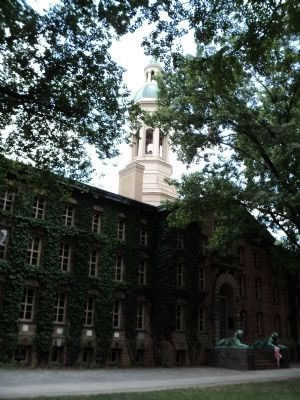
This building, erected in 1756 by the College of New Jersey and named Nassau Hall in honor of King William III, was seized by British forces for military purposes in 1776, and retaken by the American Army January 3, 1777.
Here met from June 30, 1783 until Nov. 4, 1788, the Continental Congress, and here Aug. 26, 1783, General Washington received the grateful acknowledgements of the Congress for his services in establishing the freedom and independence of the United States of America.
Old Barracks
Barrack Street
Trenton, NJ 08608
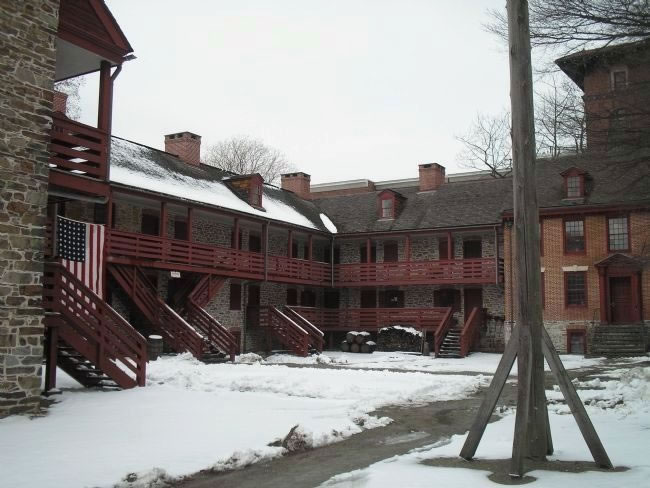
Built in 1758 for British troops of the French and Indian War. Hessians were quartered here before the Battle of Trenton. Col. Johann Rall and his Hessian troops were quartered here when George Washington and the Continental army attacked on December 26, 1776.
Old Eagle Tavern
431-433 South Broad Street
Trenton, NJ 08611
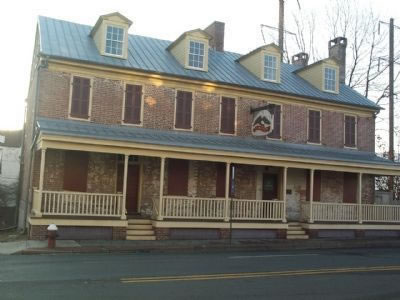
During the 19th century this tavern served travelers, soldiers, and Trentonians as a social and political center.
Old Masonic Lodge Building
Barrack Street and Lafayette Street
Trenton, NJ 08608

Erected 1793 by Trenton Lodge No. 5 F. & A. M. Restored and Rededicated 1916.
Princeton Friends - Quaker Meeting House
470 Quaker Road
Princeton, NJ 08540
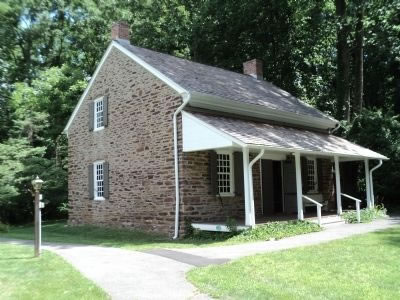
This house was used as a hospital during the January 3, 1777 Battle of Princeton. Richard Stockton, a signer of the Declaration of Independence, is buried on the grounds.
Residence of John A. Roebling
612 South Broad Street
Trenton, NJ 08611
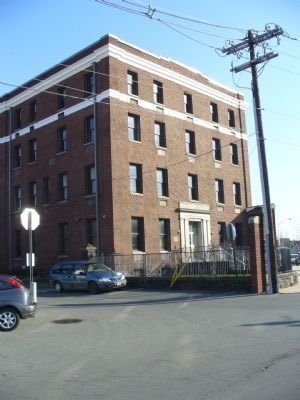
Residence, built in 1855, of John A. Roebling. American developer of wire rope and the suspension bridge. Occupied by his family until after his death in 1869. Thereafter company offices until acquired by the county. Basement vaults contained company drawings and records.
Site of the Crossing
Washington Crossing State Park
Titusville, NJ 08560
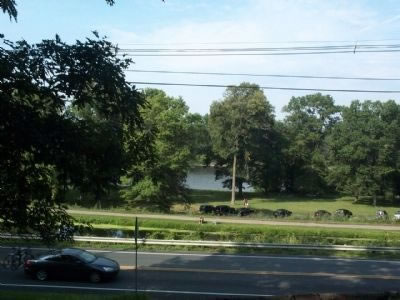
View of the Delaware River at the site where Washington crossed from Pennsylvania to New Jersey, Christmas Night, 1776, with 2400 men, artillery and supplies. The troops marched nine miles to attack the Hessians stationed at Trenton. The “Battle of Trenton”, December 26, 1776, resulted in a major victory for Washington’s army.
Temple-Ryan Farmhouse
27 Federal City Road
Ewing Township, NJ 08638
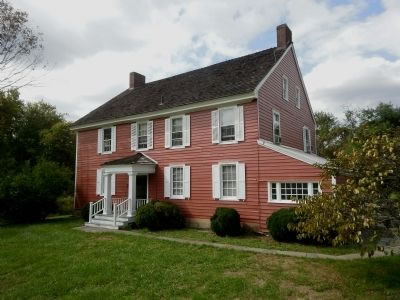
Temple-Ryan Farmhouse c. 1750
The First Presbyterian Church of Princeton
Nassau Street and Palmer Square
Princeton, NJ 08542
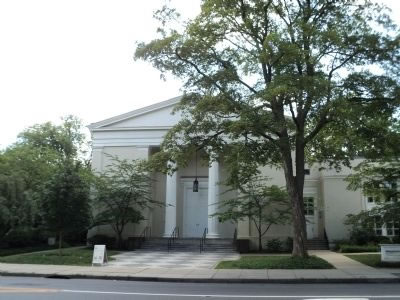
On this site in the year 1766 was erected The First Presbyterian Church of Princeton. During the Revolutionary War it was occupied, first by British soldiers
and afterwards by The Colonial Forces.
The Hermitage
46 Colonial Avenue
Trenton, NJ 08618
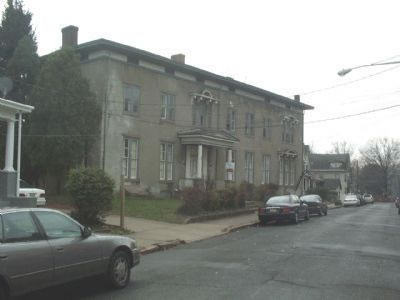
Built in 1784 by General Philemon Dickinson of General Washington’s Contintental Army. Original part of building (removed 1905) was used as Hessian outpost in 1776.
The Penitentiary House
Second Street
Trenton, NJ 08611
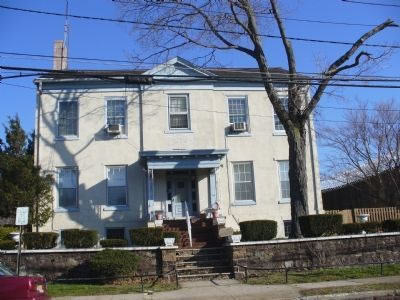
Original state prison erected in 1797.
The Wash House of Morven
55 Stockton Street
Princeton, NJ 08540
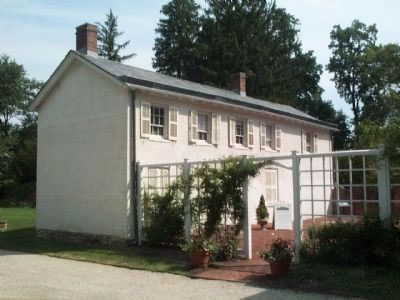
Behind the Morvin Museum is an ice-house, which probably dates to the 18th century. Ice was harvested from the pond on the Morven property. In the mid-19th century, Commodore Robert F. Stockton enlarged the structure for use as a wash house or laundry, and a dormitory for servants.
The West Wing of Morven
55 Stockton Street
Princeton, NJ 08540
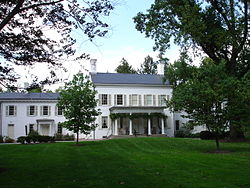
The wing housing the kitchen and service quarters is the oldest part of Morven, built by Richard Stockton, Signer of the Declaration of Independence, and his wife, Annis, in the mid-18th century. It was raised in height in the mid-19th century. The porch at its rear would have been used as a work place in good weather, as would the service yard. While one or two servants may have slept in the upper story, it probably also housed children of the large Stockton families.
Thomas Clark House
Princeton Battlefield Park
Princeton, NJ 08540
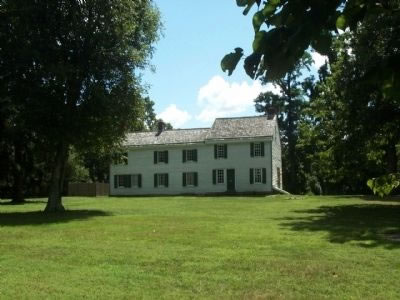
In 1772, Thomas Clarke, a Quaker farmer purchased 200 acres of land from his brother William. The land, then part of West Windsor, had been in the Clarke family since 1696. Thomas replaced an existing structure with the main house that stands today. He lived here with at least two of his sisters, Hannah and Sarah, until his death in 1802. Sarah inherited and remained in the house until her death in 1840. Her nephew, John H. Clarke, enlarged the east wing which included a new kitchen. The house was sold in 1863 to Henry E. Hale and again in 1944 to Blackwell Smith. The State of New Jersey purchased the property in 1946, and established the Clarke House Museum in 1976.
William Trent House
15 Market Street
Trenton, NJ 08611

This house was built in 1719 by William Trent for whom Trenton was named.
Given to the City of Trenton in 1929 by Edward Ansley Stokes.
Attention NJ shoppers!
Get njtgo.com's VIP savings card and get discounts at participating vendors all over the New Jersey.
